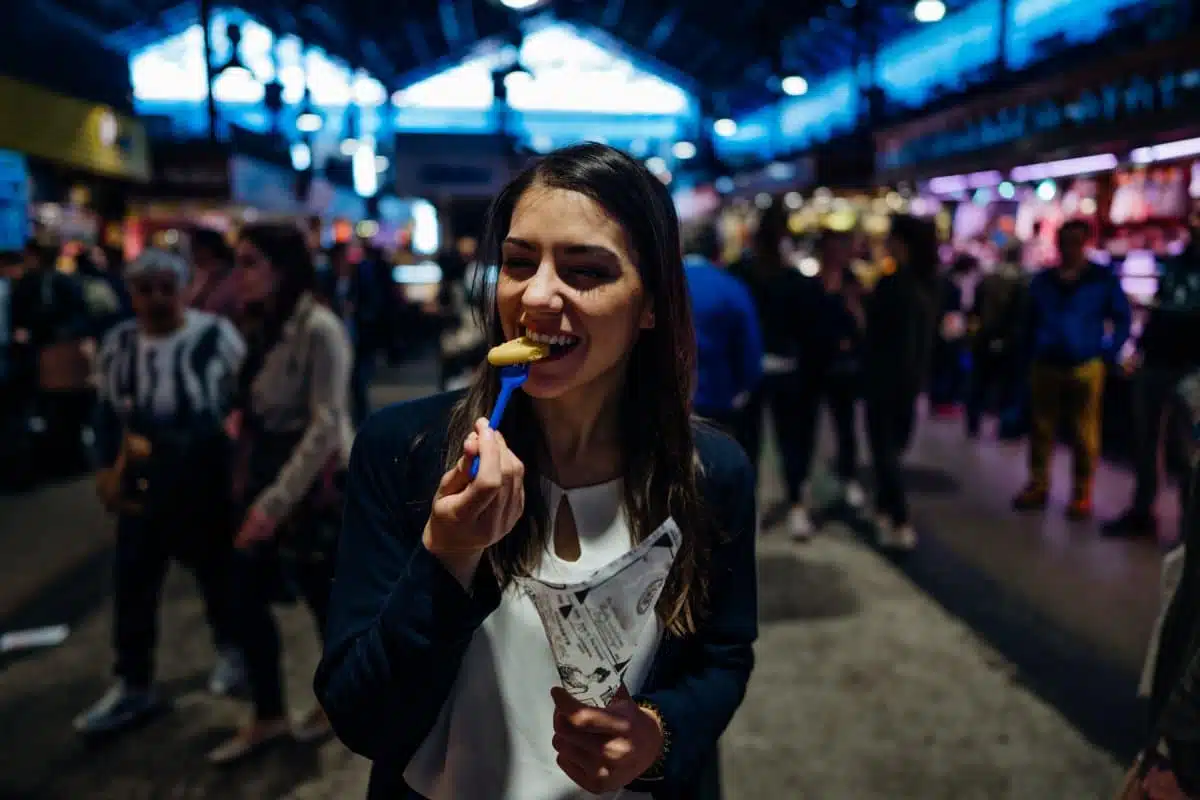Barcelona, a city renowned for its rich cultural heritage and architecture, also boasts an unparalleled gastronomic scene that beckons food enthusiasts from around the globe. This guide takes you on a culinary tour, unraveling the essence of Barcelona’s food landscape. From traditional Catalan cuisine to innovative gastronomic experiments, the city offers diverse flavors and experiences. As we navigate through the labyrinth of bustling markets, quaint tapas bars, and Michelin-starred restaurants, this guide aims to serve as an indispensable resource for those eager to explore the gastronomic delights of Barcelona. Each destination and activity within this guide is meticulously selected to provide an authentic insight into the city’s culinary traditions and innovations.
1. La Boqueria Market
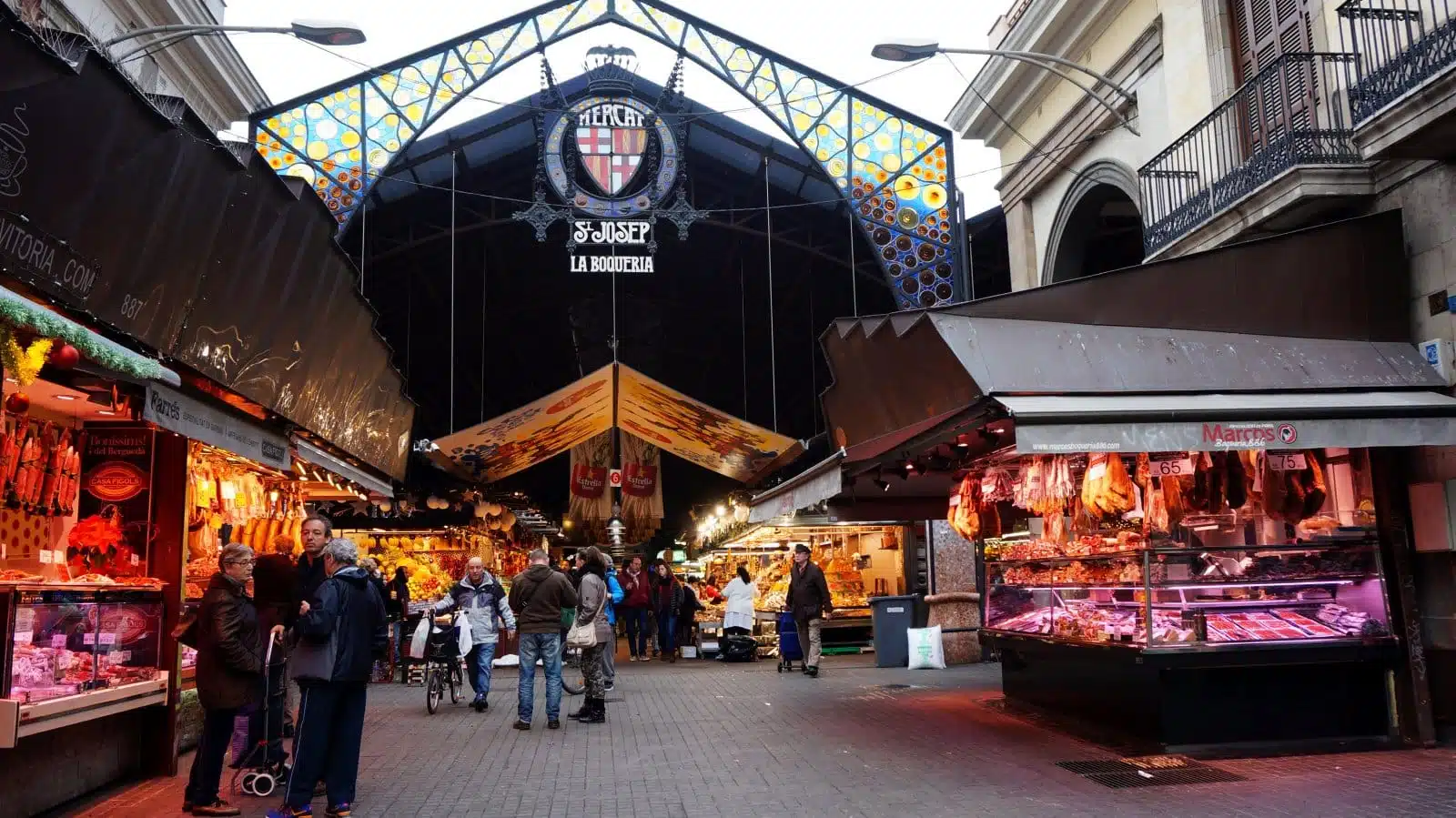
Image Credit: Shutterstock / Tang Yan Song
La Boqueria Market, officially known as Mercat de Sant Josep de la Boqueria, highlights Barcelona’s rich culinary heritage. Located along the bustling Las Ramblas, this market is a blend of colors, aromas, and flavors, offering an extensive array of local and exotic produce, meats, seafood, cheeses, and sweets. It’s a culinary exhibition showcasing the freshest ingredients that form the backbone of Catalan cuisine. Here, visitors can explore various stalls selling everything from Iberian ham to artisanal chocolates, making it a paradise for food lovers. The market also hosts several bars and eateries, where you can savor traditional dishes prepared with ingredients sourced directly from the market’s vendors.
Insider’s Tip: For an authentic experience, visit the market early in the morning to avoid the crowds and witness local chefs selecting produce for their day’s menu. Don’t miss the opportunity to try a fresh seafood breakfast at one of the market’s bars.
When to Travel: The best time to visit La Boqueria is during the spring (April to June) or fall (September to November) when the weather is pleasant, and the market is full of seasonal produce.
How to Get There: La Boqueria is easily accessible by metro, with the closest station being Liceu on Line 3 (Green Line). It’s also within walking distance from many central locations in Barcelona.
2. Poble-Sec’s Tapas Bars
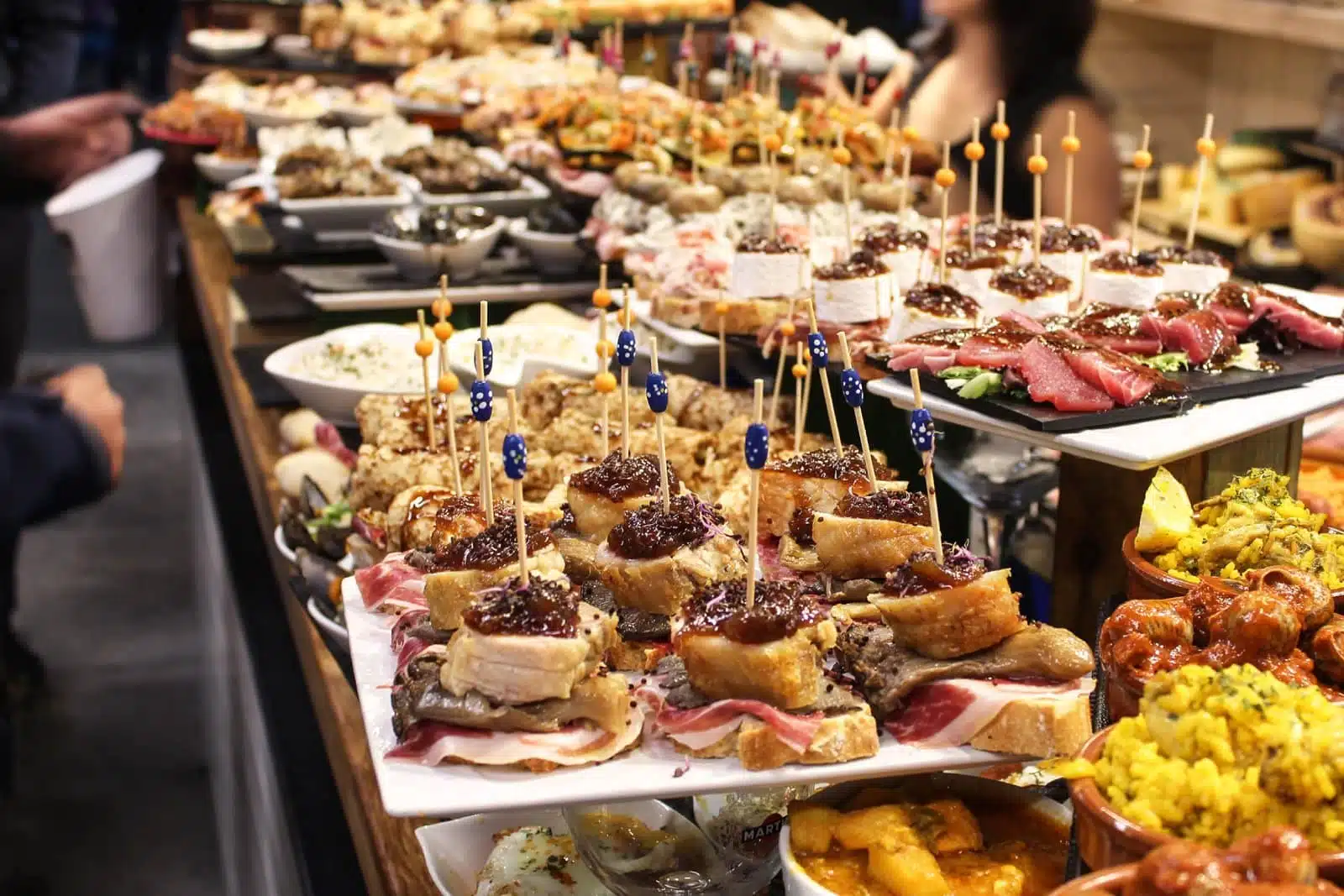
Image Credit: Shutterstock / MisterStock
Nestled at the foot of Montjuïc, Poble-Sec is a vibrant neighborhood renowned for its dynamic tapas scene. This area is dotted with numerous bars and restaurants where you can indulge in various tapas, ranging from classic patatas bravas to innovative culinary creations. Carrer de Blai, the neighborhood’s main thoroughfare, is particularly famous for its pintxo bars, offering small bites served on bread, perfect for a gastronomic tour on foot. Poble-Sec combines the charm of traditional Catalan tapas with modern gastronomy, making it a must-visit for anyone eager to dive into Barcelona’s culinary culture.
Insider’s Tip: Embark on a tapas crawl in the evening when the streets come alive with locals and visitors alike. Look for bars where you see more locals than tourists to ensure an authentic experience.
When to Travel: The neighborhood is lively throughout the year, but visiting in the late spring or early fall can enhance the experience with milder temperatures and fewer tourists.
How to Get There: Poble-Sec is accessible by the Barcelona Metro. The Poble-Sec station on Line 3 (Green Line) is the most convenient way to reach the heart of this culinary hotspot.
3. Michelin-Starred Dining
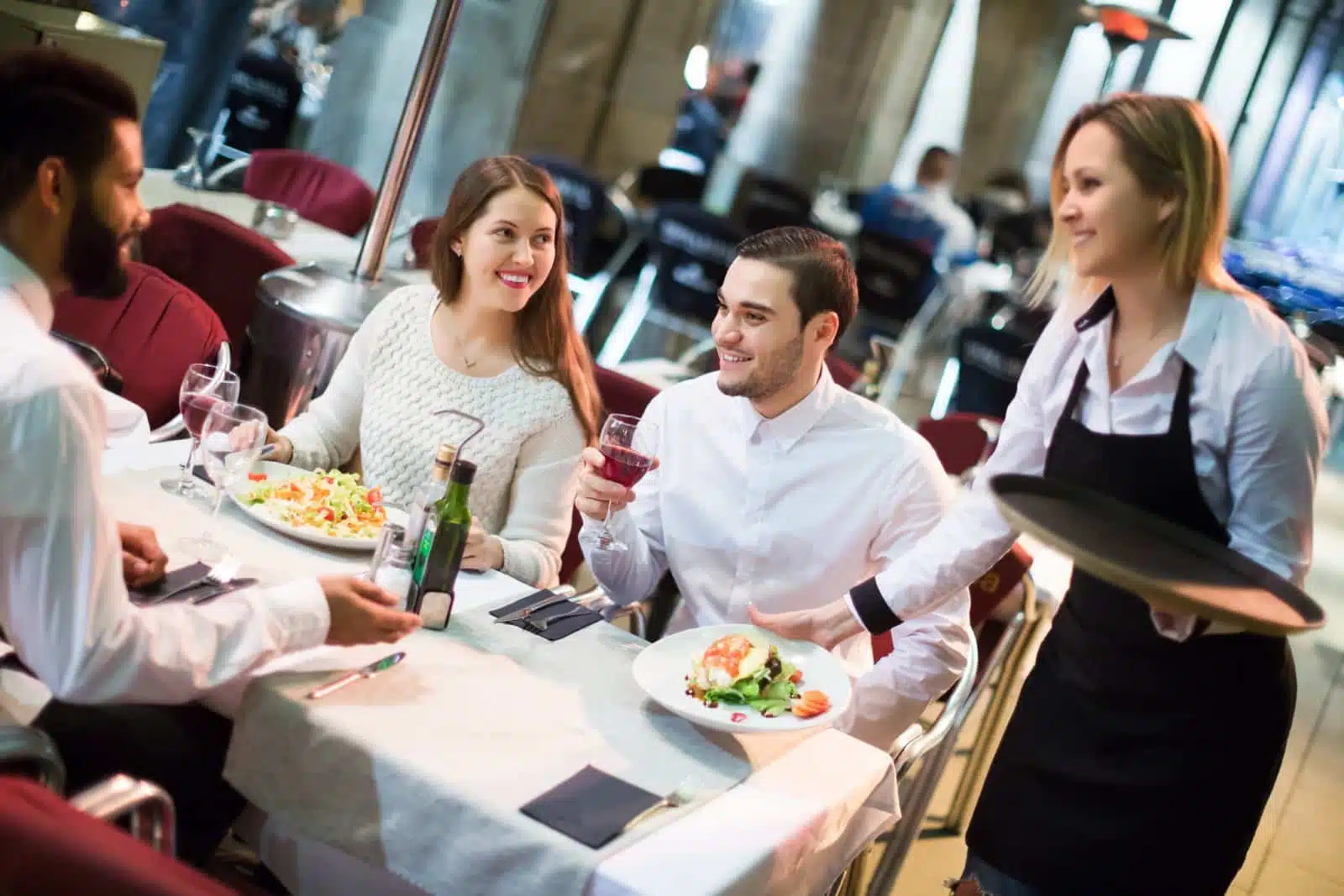
Image Credit: Shutterstock / BearFotos
Barcelona boasts an impressive number of Michelin-starred restaurants offering innovative and exquisite dining experiences. These establishments, led by world-renowned chefs, push the boundaries of culinary arts, combining traditional Catalan flavors with avant-garde techniques. Dining in one of Barcelona’s Michelin-starred restaurants is an immersive journey through textures, flavors, and culinary innovation. Each dish is crafted, presenting a blend of local ingredients and global influences, making it a must-experience for any gastronome.
Insider’s Tip: Reservations are often required months in advance, especially for restaurants with three Michelin stars. Consider booking a lunch service for a more accessible yet equally sophisticated experience.
4. Catalan Cooking Classes
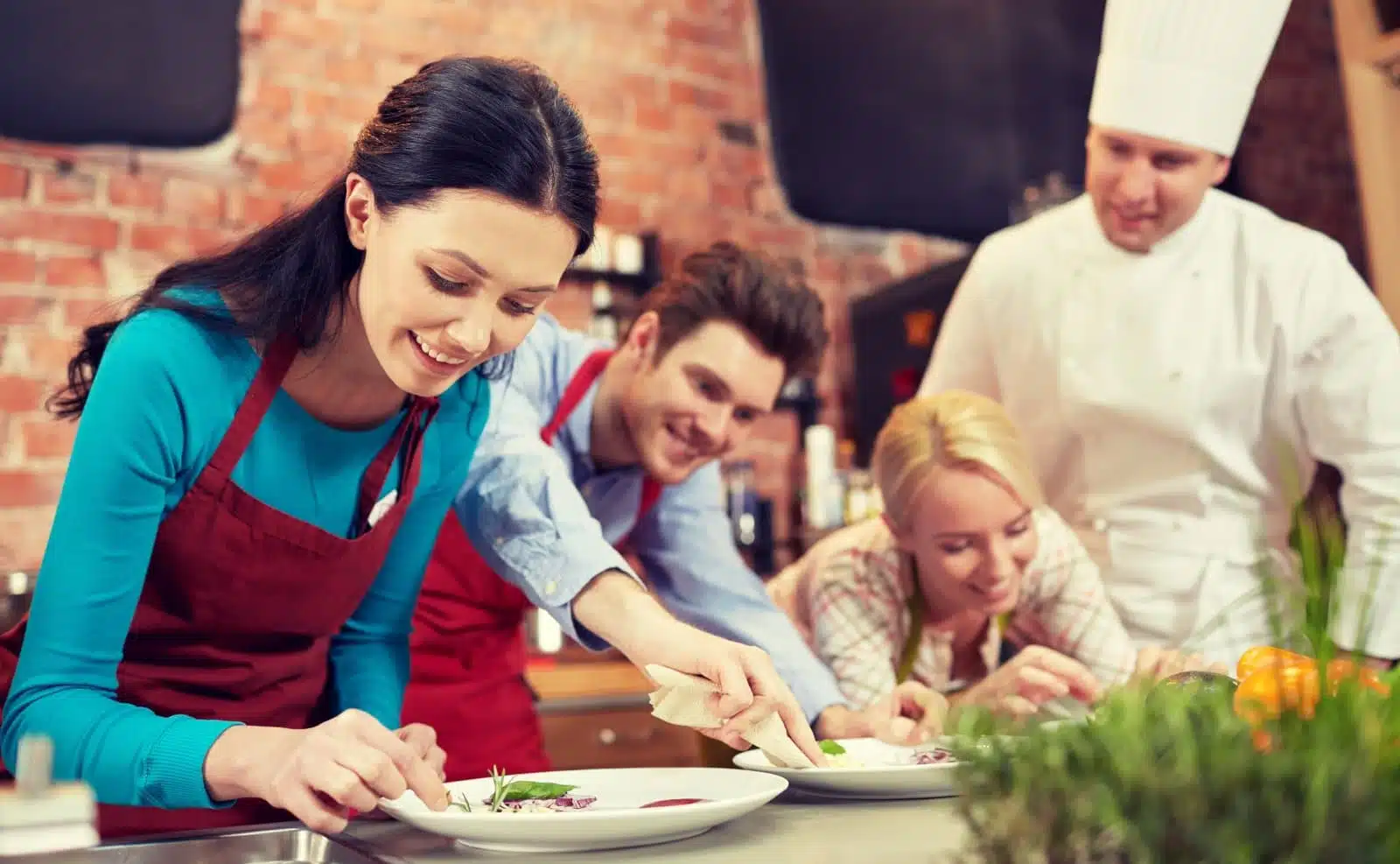
Image Credit: Shutterstock / Ground Picture
Engaging in a Catalan cooking class offers more than just a meal; it’s an immersive experience into the heart of Barcelona’s culinary traditions. These classes often begin with a guided tour of a local market, such as La Boqueria, where participants learn to select fresh ingredients. Back in the kitchen, professional chefs introduce the secrets behind classic Catalan dishes like paella, crema catalana, and tapas. It’s a hands-on opportunity to delve into the region’s cooking techniques, flavors, and cultural significance, culminating in a communal meal where participants savor their creations.
Insider’s Tip: Look for cooking classes that include a market tour for a more comprehensive culinary experience. It adds a layer of understanding and appreciation for the ingredients used in Catalan cuisine.
How to Get There: Most cooking schools are located in or near the city center, making them accessible by metro, bus, or a short walk from major accommodations.
5. El Raval’s International Cuisine
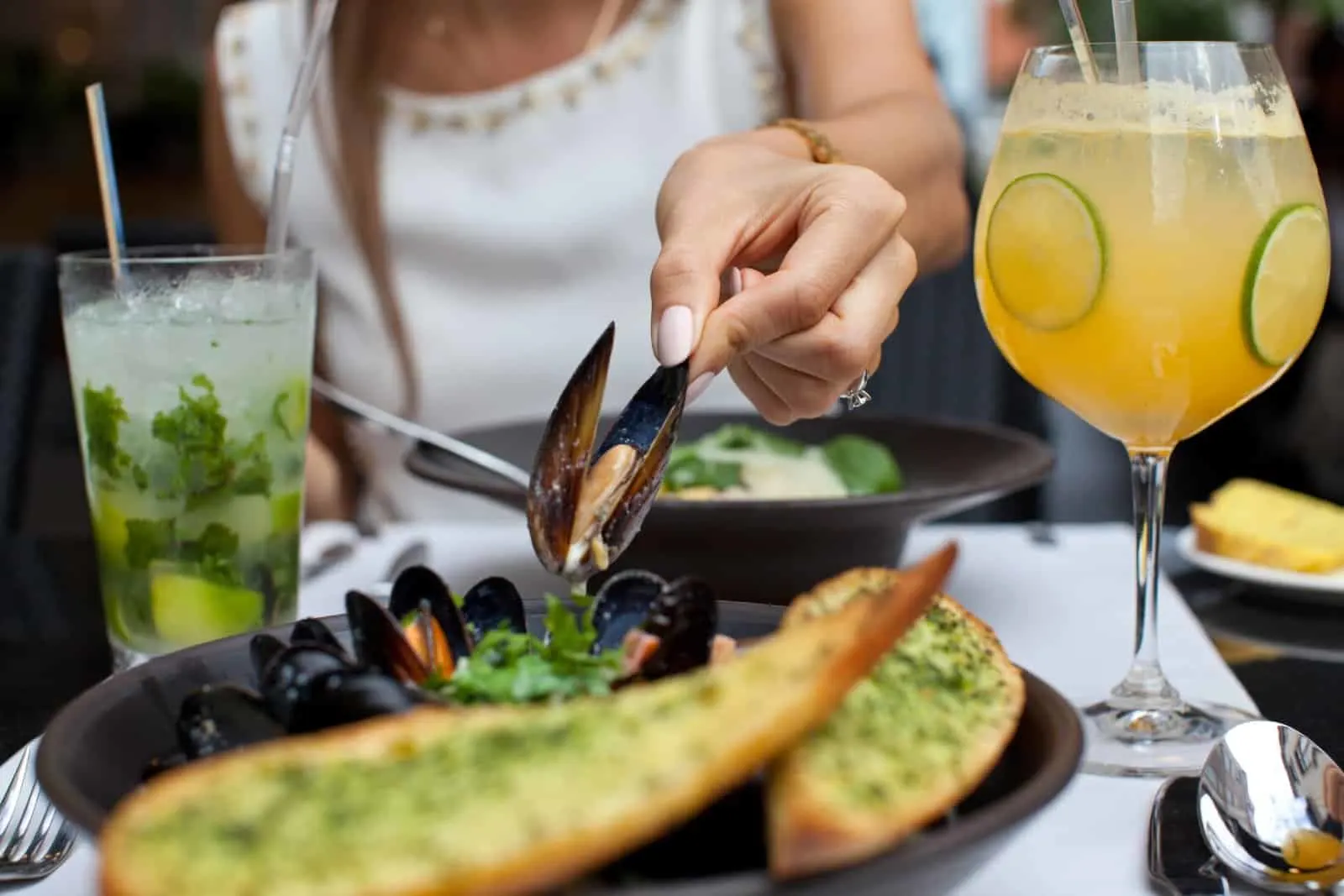
Image Credit: Shutterstock / AbElena
El Raval offers a stark contrast to the traditional Catalan and Spanish eateries found throughout Barcelona. This multicultural neighborhood is a melting pot of international cuisine, reflecting the diverse community that calls it home. From Middle Eastern falafel shops to Asian fusion restaurants, El Raval presents a global culinary tour within its narrow streets. It’s an ideal destination for foodies looking to explore flavors from around the world, all within walking distance of each other.
Insider’s Tip: Venture into El Raval in the evening when many restaurants offer special menus and live music, transforming the dining experience into a cultural event.
How to Get There: El Raval is centrally located and easily accessible on foot from La Rambla or by metro, with several stations surrounding the area.
6. Wine Tasting in Penedès

Image Credit: Shutterstock / NDAB Creativity
A short journey from Barcelona, the Penedès region is renowned for its wine, particularly Cava, Spain’s answer to champagne. Visiting vineyards and bodegas in this picturesque area offers insight into the winemaking process, from grape cultivation to bottling. Guided tours often include walking through the vineyards, exploring the cellars, and, most importantly, tasting the wines. It’s a chance to learn about the region’s unique grape varieties and the traditional methods that give Penedès wines distinctive flavors.
Insider’s Tip: Many wineries offer the opportunity to pair wines with local cheeses and charcuterie. Opt for these tastings to enhance the experience with a gastronomic dimension.
How to Get There: Penedès is accessible by train from Barcelona’s Sants Station to Vilafranca del Penedès, followed by a short taxi ride to various wineries.
7. Sants District’s Local Eateries
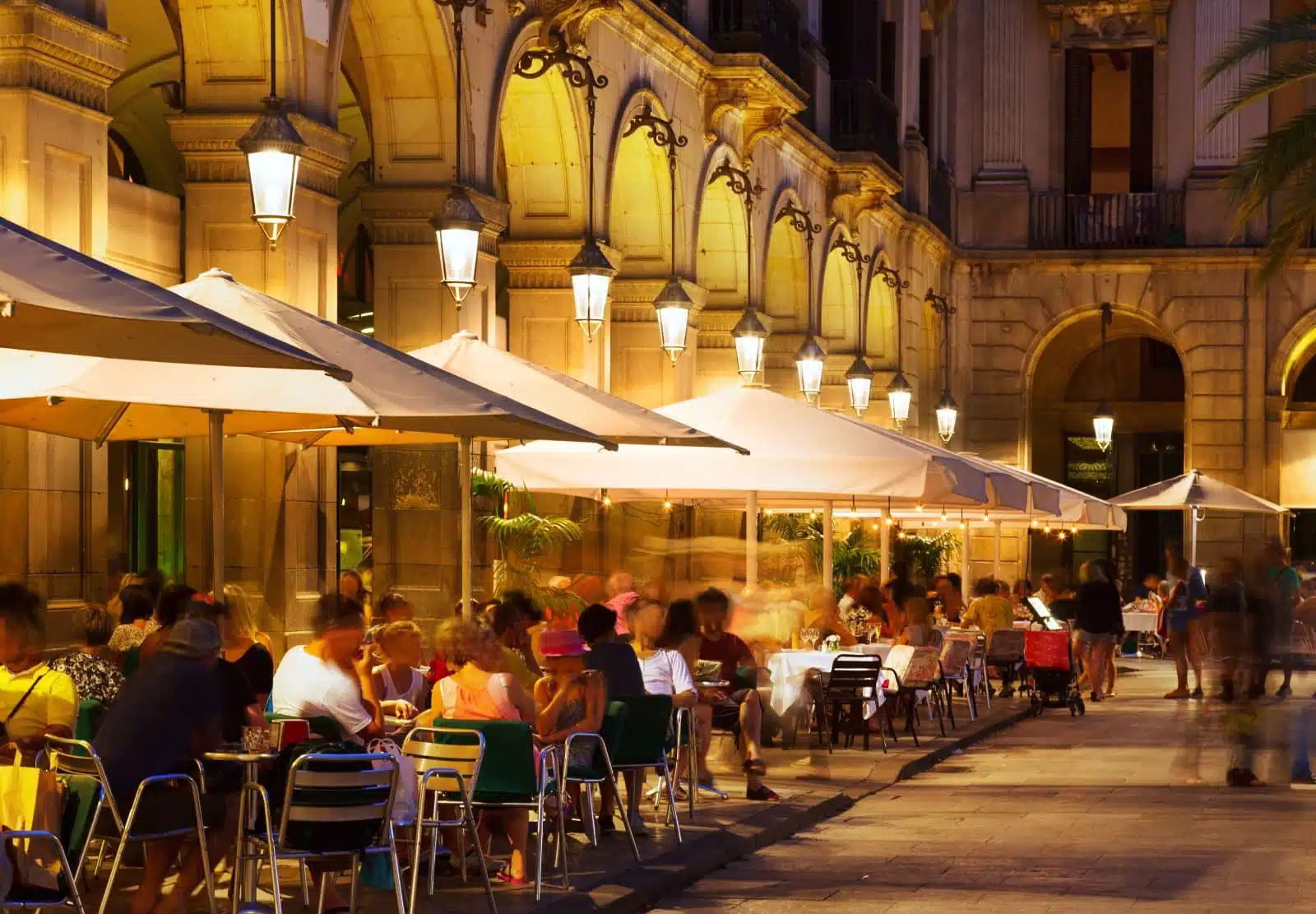
Image Credit: Shutterstock / BearFotos
Away from the tourist trails, the Sants district offers an authentic slice of Barcelona life, reflected in its food. This residential neighborhood is filled with local eateries, bakeries, and bars where traditional Catalan cuisine takes center stage. You can enjoy home-style meals, artisanal pastries, and tapas in a more relaxed and genuinely local atmosphere. Dining in Sants allows visitors to experience the everyday culinary culture of Barcelona, from breakfast churros and chocolate to leisurely lunches and lively dinner scenes.
Insider’s Tip: Explore the area around Carrer de Sants, one of Barcelona’s longest shopping streets, which is dotted with various culinary gems that cater more to locals than tourists.
How to Get There: Sants is well connected by Barcelona’s metro system, with the Sants Estació station serving as a main hub.
8. Gràcia’s Artisanal Food Shops
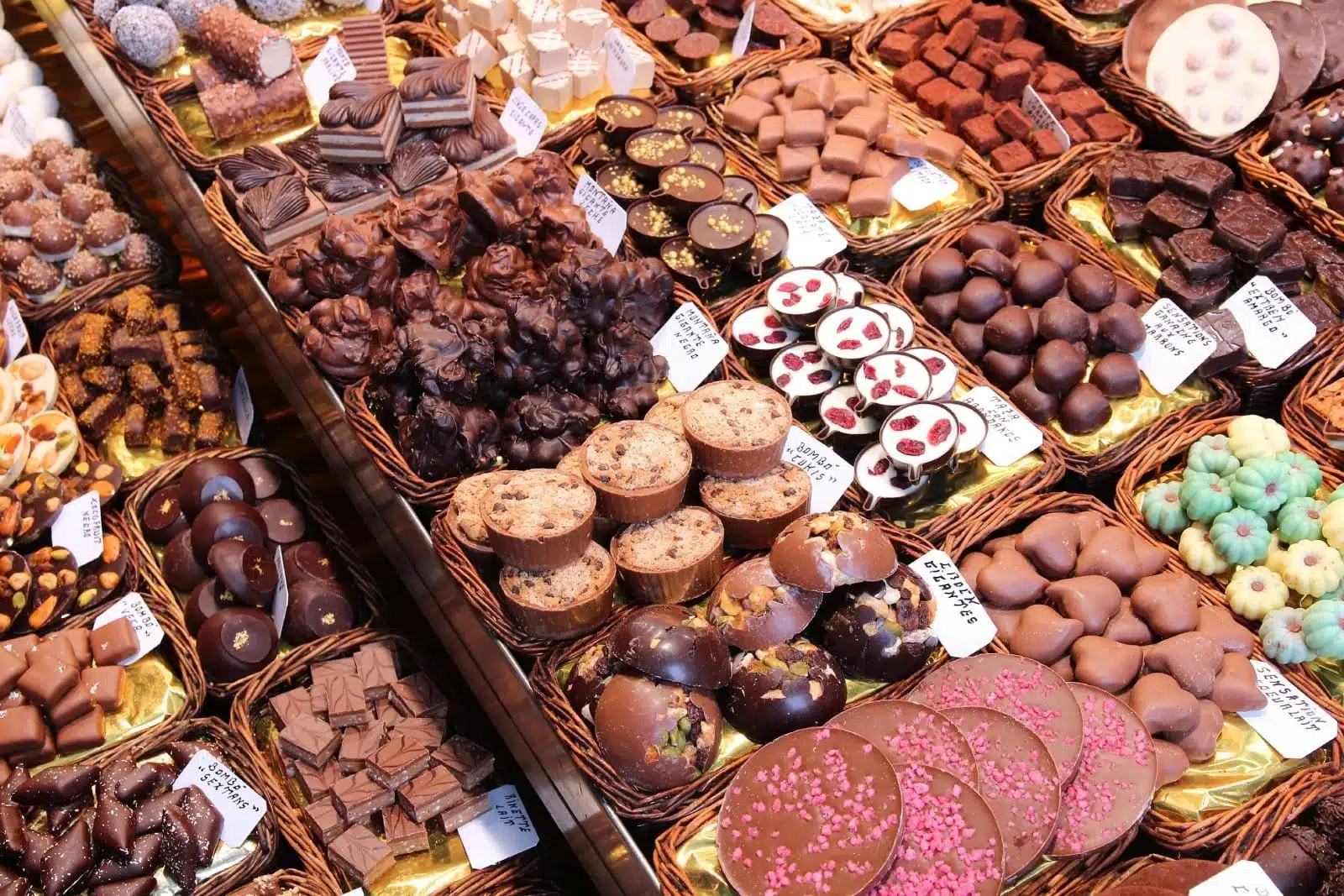
Image Credit: Shutterstock / Tupungato
Gràcia, once a separate town from Barcelona, retains a distinct, village-like charm, partly thanks to its array of artisanal food shops. This neighborhood is a haven for food enthusiasts looking to discover locally made cheeses, chocolates, bread, and other delicacies. Walking through Gràcia’s narrow streets, visitors encounter family-run shops that have been perfecting their crafts for generations. It’s an ideal place to find unique edible souvenirs or ingredients for a picnic in one of the neighborhood’s many squares.
Insider’s Tip: Visit the Mercat de la Llibertat, a local market in Gràcia, for a wide selection of fresh and artisanal products under one roof.
How to Get There: Gràcia is accessible by the L3 (green) and L4 (yellow) metro lines. Fontana and Joanic stations are the most convenient stops for exploring the neighborhood.
9. Gothic Quarter’s Historic Cafés and Bistros

Image Credit: Shutterstock / grigoriy belyaevn
The Gothic Quarter, with its labyrinthine streets and medieval architecture, is a historical treasure and a hub for some of Barcelona’s most iconic cafés and bistros. These establishments, set against centuries-old buildings, offer a blend of traditional Catalan cuisine and European fare. The area’s historic cafés, in particular, are where one can enjoy a coffee or meal alongside locals and tourists. These spots often serve as perfect retreats to enjoy a leisurely breakfast or a mid-afternoon snack while soaking in the ambiance of old Barcelona.
Insider’s Tip: Seek out cafés that retain their original Art Nouveau interiors for a truly historic dining experience. These places often hide in plain sight, offering serene escapes from the bustling city.
How to Get There: The Gothic Quarter is centrally located and easily accessible on foot from La Rambla. Jaume I (L4) and Liceu (L3) are the closest metro stops.
10. Seafood Restaurants Along the Barceloneta Beach
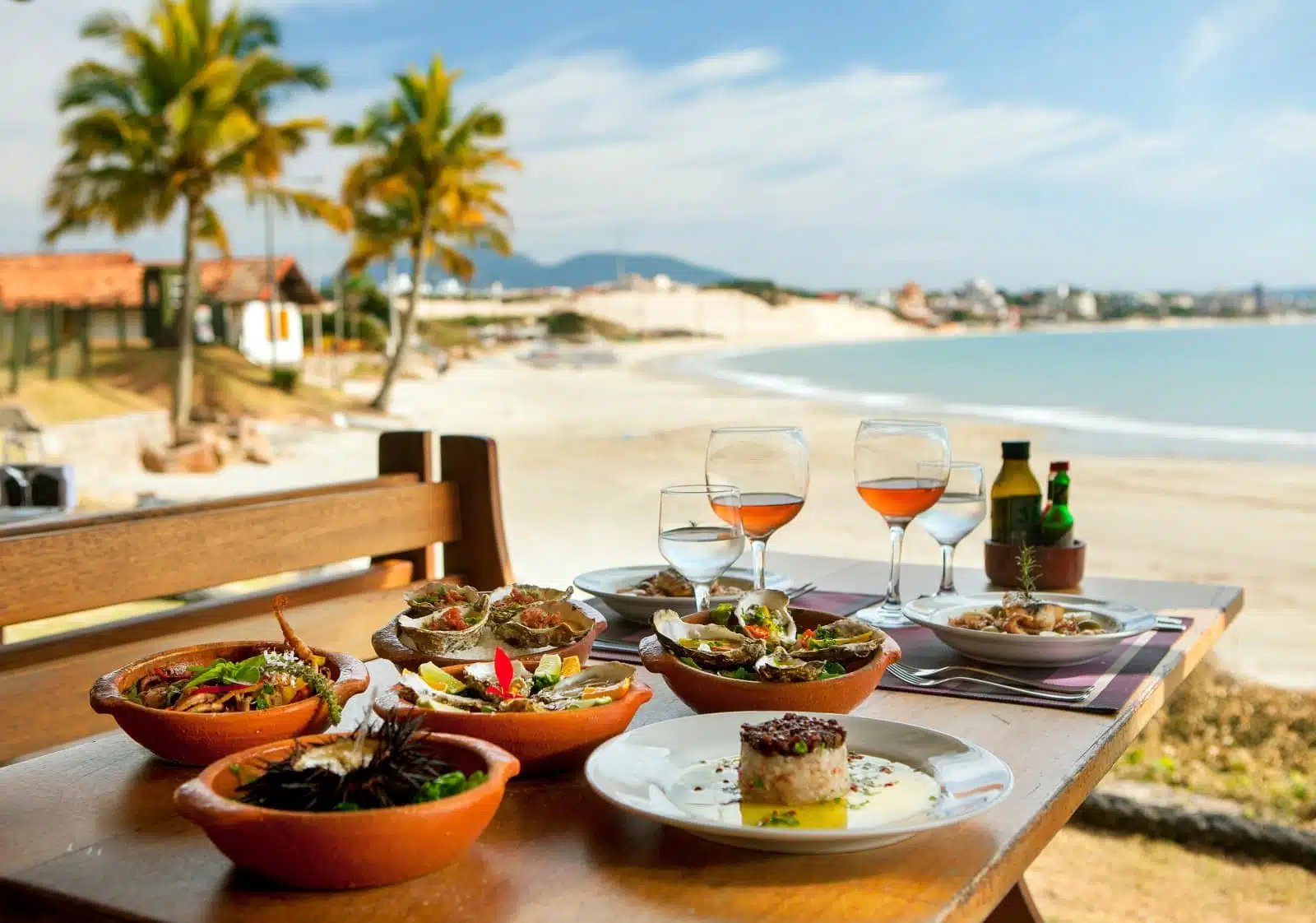
Image Credit: Shutterstock / Luis Inacio P Prado
Barceloneta, Barcelona’s seaside neighborhood, is renowned for its seafood restaurants that line the promenade overlooking the Mediterranean. Here, diners can indulge in freshly caught seafood, ranging from traditional paellas to innovative seafood dishes. The restaurants in Barceloneta are known for their quality and authenticity, offering a taste of the Mediterranean’s bounty. Dining in one of these establishments provides a culinary delight and stunning views of the sea and the beach, making for an unforgettable dining experience.
Insider’s Tip: For the freshest seafood, choose restaurants that are popular with locals and ask for the day’s catch. Dining during sunset offers a spectacular backdrop to your meal.
How to Get There: Barceloneta is accessible by the Barcelona Metro (L4, Barceloneta station). The beach and its restaurants are a short walk from the station.
11. Artisanal Chocolate Shops in Sant Pere, Santa Caterina i la Ribera
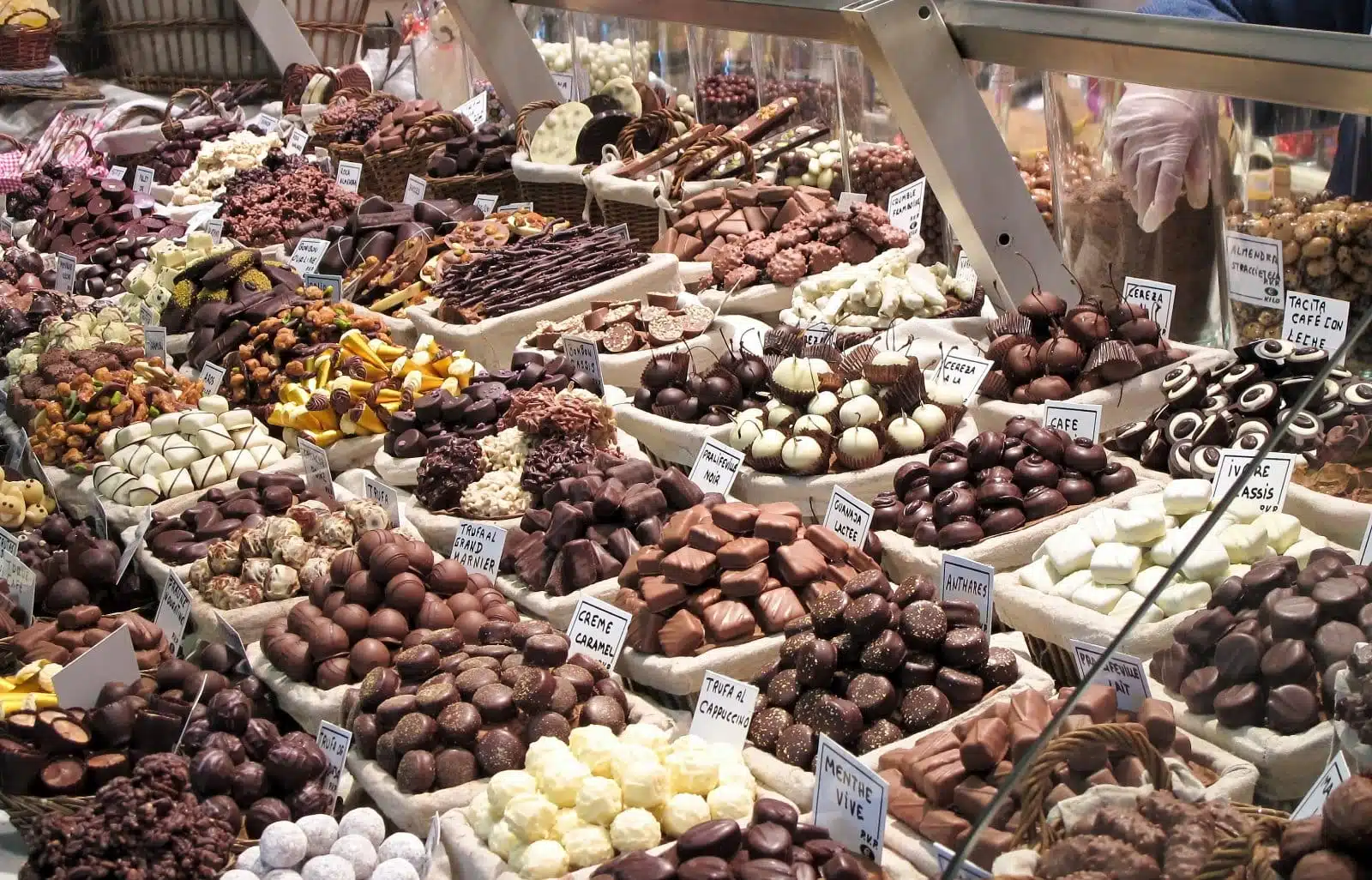
Image Credit: Shutterstock / Andreas Altenburger
The neighborhoods of Sant Pere, Santa Caterina i la Ribera, part of the larger Born area, are home to some of Barcelona’s most delightful artisanal chocolate shops. These boutiques offer a range of handmade chocolates and sweets, showcasing the craftsmanship and creativity of local chocolatiers. Visitors can find everything from traditional Spanish chocolates to contemporary creations infused with unique flavors. These shops often offer tastings and workshops, providing a deeper understanding of chocolate-making.
Insider’s Tip: Look for shops that offer chocolate pairings with local wines or cava for a unique tasting experience that highlights the flavors of Catalonia.
How to Get There: These neighborhoods are centrally located and easily accessible on foot from the Gothic Quarter or by metro, with the Arc de Triomf (L1) and Jaume I (L4) stations being the closest.
12. Farm-to-Table Restaurants in Eixample
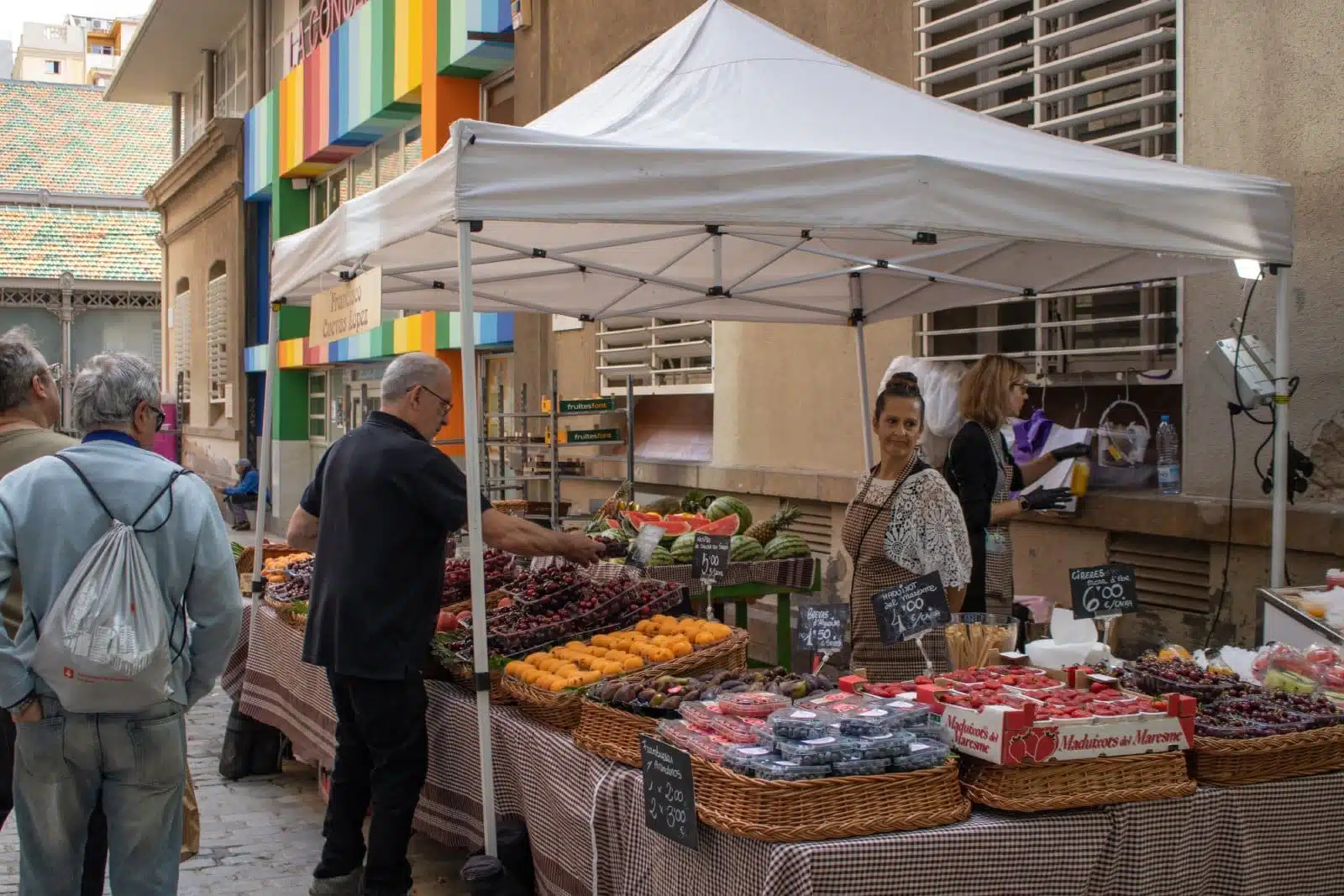
Image Credit: Shutterstock / SergiCL
The Eixample district, known for its modernist architecture, is also a burgeoning scene for farm-to-table dining. These restaurants focus on sustainability and locally sourced ingredients, offering menus that change with the seasons. Dining in one of Eixample’s farm-to-table establishments provides a contemporary culinary experience rooted in the traditions of Catalan cuisine. It’s an opportunity to taste the freshest produce, meats, and seafood, all while supporting local farmers and producers.
Insider’s Tip: Reserve a table for lunch to take advantage of the “menú del día” – a set menu that offers great value and showcases the chef’s selection of seasonal dishes.
How to Get There: Eixample is well-served by multiple metro lines, making it easily accessible from any part of the city. The Passeig de Gràcia (L2, L3, L4) and Diagonal (L3, L5) stations are central to the area.
When to Travel:
Spring (April to June) and Fall (September to November) offer mild weather, fewer tourists, and a variety of local produce, ideal for culinary explorations.
Summer (July and August) is peak tourist season, marked by hot weather and crowded sites, yet vibrant with festivals and beach activities.
Fall (September to November): Offers mild weather with fewer tourists, ideal for exploring markets and seasonal menus enriched by the local harvest.
Winter (December to February) sees fewer visitors, offering a quieter experience with the opportunity to enjoy indoor attractions and traditional cuisine in a cozy setting.
How to Get There:
Air: Barcelona-El Prat Airport (BCN) is the main international gateway, located 13 kilometers from the city center, serving numerous global airlines.
Train: High-speed trains connect Barcelona with Spain and neighboring countries, arriving at Barcelona Sants station.
Road: Well-maintained highways and long-distance buses offer access from across Europe.
Sea: The port welcomes cruise ships and ferries from Mediterranean destinations.
Barcelona’s efficient public transport system facilitates easy city navigation, including metro, buses, and taxis. This accessibility supports a seamless exploration of Barcelona’s culinary landscape, from traditional Catalan dishes to innovative dining experiences.
The Bottom Line
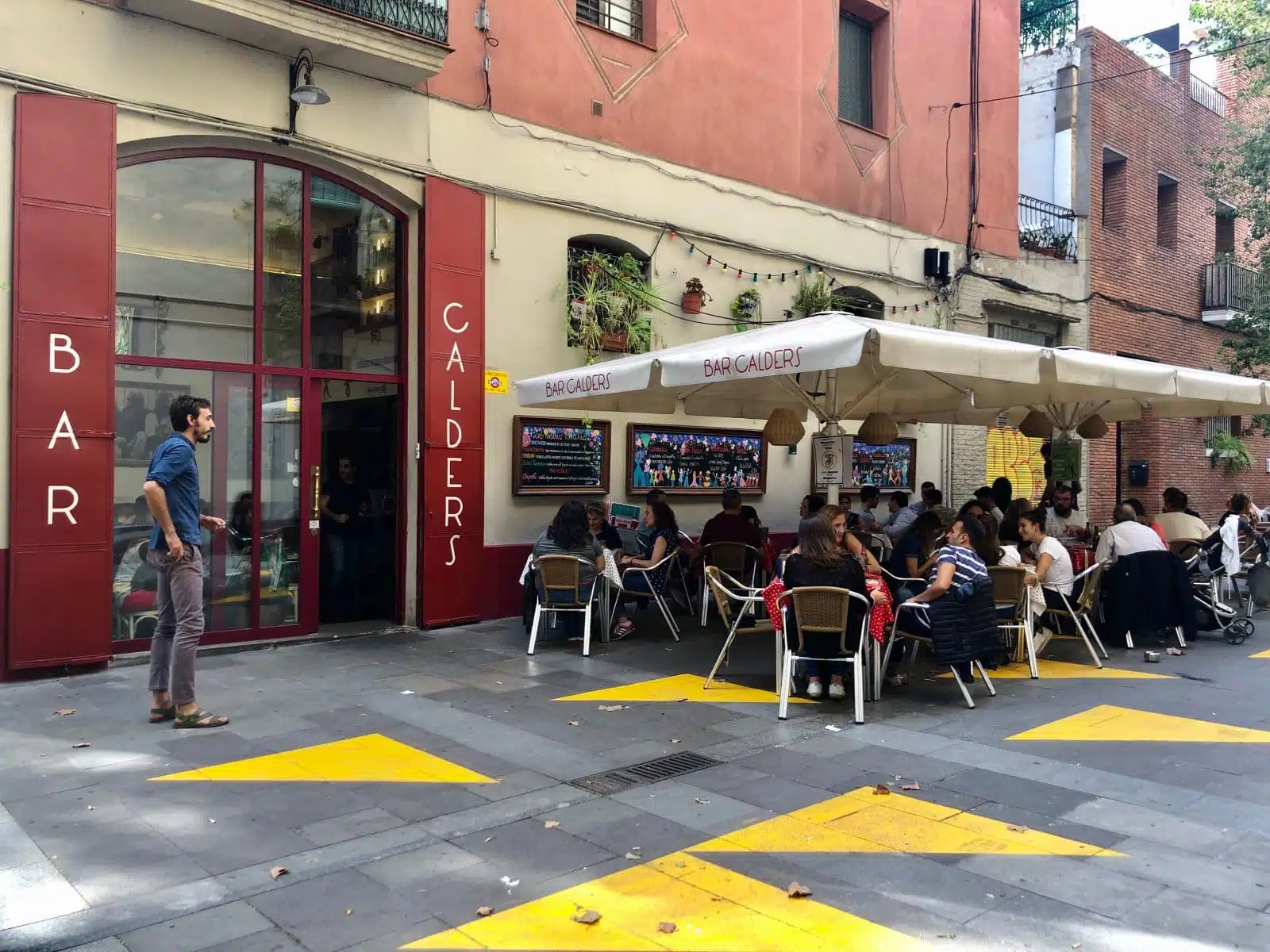
Image Credit: Shutterstock / MeriPopps
Barcelona’s culinary scene is as diverse as it is rich, offering everything from historic cafés to beachside seafood, artisanal chocolates, and innovative farm-to-table dining. Whether you’re exploring the narrow streets of the Gothic Quarter, soaking in the Mediterranean views in Barceloneta, or indulging in the modernist charm of Eixample, Barcelona invites you to savor its gastronomic delights. To truly experience the essence of this vibrant city, immerse yourself in its culinary culture, where every meal tells a story of tradition, innovation, and the joy of sharing good food.
More From The Green Voyage
Top 10 Trending Travel Destinations 2024
6 Essential Banking Apps for International Travel – Managing Your Finances on the Go
Traveling With Kids – 10 Tips to Create Memorable Family Holidays
The post A Culinary Tour of Barcelona, Spain 2024 first appeared on The Green Voyage.
Featured Image Credit: Shutterstock / eldar nurkovic.
For transparency, this content was partly developed with AI assistance and carefully curated by an experienced editor to be informative and ensure accuracy.
Tips for Trip Success
Book Your Flight
Find an inexpensive flight by using Kayak, a favorite of ours because it regularly returns less expensive flight options from a variety of airlines.
Book Your Hotel or Special Accommodation
We are big fans of Booking.com. We like their review system and photos. If we want to see more reviews and additional booking options, we go to Expedia.
You Need Travel Insurance!
Good travel insurance means having total peace of mind. Travel insurance protects you when your medical insurance often will not and better than what you get from your credit card. It will provide comprehensive coverage should you need medical treatment or return to the United States, compensation for trip interruption, baggage loss, and other situations.Find the Perfect Insurance Plan for Your Trip
